
The AI tablet has a display problem - Samsung Galaxy Tab S10 Plus review
Does this SoC make sense?
According to Samsung, the Galaxy Tab S10+ is a tablet that was developed specially for AI functions. However, the manufacturer is breaking new ground with its choice of processor. In our Tab S10 Plus review, we take a close look at whether the Galaxy Tab has really done itself a favor with this chipset.Marcus Herbrich, 👁 Daniel Schmidt (translated by Andrew Dickson) Published 🇩🇪 🇫🇷 ...
Samsung Galaxy Tab S10 Plus verdict
The Galaxy Tab S series is synonymous with high-end tablets in the Android sector. However, with the Tab S10 range, Samsung is breaking with tradition in many respects. The higher NPU performance of the built-in MediaTek Dimensity 9300+ is certainly an advantage for the OneUI's numerous AI functions compared to the previous generation's Qualcomm chipset. Nevertheless, bringing the Tab S10+ to the market with a 2023 SoC shortly before the release of the current processor generation is a regrettable choice. Although Samsung has done something similar in the past, it's particularly noticeable this year, considering the significant leap in performance we see in the Dimensity 9400 or Snapdragon 8 Elite.
Regarding the display, Samsung is also treading water with its now "compact“ flagship tablet. A peak brightness of around 600 cd/m² combined with low-frequency flickering is an aspect Samsung will have to urgently work on with its Galaxy Tab S11+. It's in this area that the OLED competitors, such as the MagicPad 2 or MatePad Pro 12.2, offer a visibly better user experience with 1,500 cd/m² and 4,000 Hz PWM dimming.
Aside from this criticism, the Galaxy Tab S10+ is still a wonderful tablet for media consumption and, thanks to the excellent S Pen, it's ideally suited as a digital school or university companion. The very long update support paired with a wide-ranging feature set are also virtues which make the Galaxy tablet an ideal work device.
Pros
Cons
Price and availability
The Samsung Galaxy Tab S10 Plus has an RRP starting price of $999 (256 GB of storage) and can be purchased on the manufacturer's store. Doubling the storage to 512 GB will currently set you back a total of $1,119, and anyone seeking internet on the go will have to fork out an additional $130 for the 5G version.
Possible alternatives compared
Image | Model / Review | Price | Weight | Drive | Display |
|---|---|---|---|---|---|
| Samsung Galaxy Tab S10+ MediaTek Dimensity 9300+ ⎘ ARM Immortalis-G720 MP12 ⎘ 12 GB Memory, 256 GB | Amazon: 1. $779.99 Samsung Galaxy Tab S10+ Plus... 2. $749.99 Samsung Galaxy Tab S10+ Plus... 3. $299.99 Samsung Galaxy Tab S10 Lite,... List Price: 1119€ | 571 g | 256 GB UFS 4.0 Flash | 12.40" 2800x1752 266 PPI Dynamic AMOLED 2X | |
| OnePlus Pad 2 Qualcomm Snapdragon 8 Gen 3 ⎘ Qualcomm Adreno 750 ⎘ 12 GB Memory, 256 GB | Amazon: $349.99 List Price: 549€ | 584 g | 256 GB UFS 3.1 Flash | 12.10" 3000x2120 304 PPI IPS | |
| Honor MagicPad 2 Qualcomm Snapdragon 8s Gen 3 ⎘ Qualcomm Adreno 735 ⎘ 12 GB Memory, 256 GB | Amazon: 1. $23.99 Smart Tablet Case for Honor ... 2. $11.96 Kepuch 2 Pack Tempered Glass... 3. $41.99 Magnetic Detachable Wireless... List Price: 600€ | 555 g | 256 GB UFS 3.1 Flash | 12.30" 3000x1920 290 PPI OLED | |
| Xiaomi Pad 6S Pro Qualcomm Snapdragon 8 Gen 2 ⎘ Qualcomm Adreno 740 ⎘ 8 GB Memory, 256 GB | Amazon: 1. $25.00 Clear Case for Xiaomi Pad 6S... 2. $9.99 Rosbtib Rotating Case for Xi... 3. $9.99 Yiernuo Case Compatible Xiao... List Price: 700€ | 590 g | 256 GB UFS 4.0 Flash | 12.40" 3048x2032 294 PPI IPS | |
| Samsung Galaxy Tab S9+ Qualcomm Snapdragon 8 Gen 2 for Galaxy ⎘ Qualcomm Adreno 740 ⎘ 12 GB Memory, 256 GB | Amazon: List Price: 1269€ | 586 g | 256 GB UFS 4.0 Flash | 12.40" 2800x1752 266 PPI AMOLED |
Table of Contents
- Samsung Galaxy Tab S10 Plus verdict
- Samsung Galaxy Tab S10 Plus specifications
- Case - The Galaxy Tab S10 Plus has an IP rating
- Features - The Samsung tablet has USB 3.2
- Software - The Galaxy Tab S10 Plus offers long updates
- Cameras - The Samsung tablet has a dual cam
- Accessories and warranty - The Galaxy Tab S10 Plus packs an S Pen
- Input devices & operation - The Samsung tablet comes with a fingerprint sensor
- Display - The Galaxy Tab S10 Plus has gone with OLED
- Performance - The Samsung tablet packs a MediaTek SoC
- Games - The Samsung Galaxy Tab S10 Plus can hit 120fps
- Emissions - The Samsung tablet has some hot spots
- Battery runtimes - The Galaxy Tab S10 Plus is still quite a slow charger
- Notebookcheck overall rating
Unlike previous years, the Galaxy Tab S10+ is the smallest tablet in the Tab S10 series, possessing a screen size of 12.4 inches. The successor to the Tab S9+ differentiates itself in a few areas compared to the Ultra model but also shares many similarities. Under the hood is the MediaTek Dimensity 9300+, which already cut a good figure in the Xiaomi 14T Pro.
Samsung Galaxy Tab S10 Plus specifications
Case - The Galaxy Tab S10 Plus has an IP rating
Apart from the colors, the Galaxy Tab S10+ has the same design as its predecessor. Even the dimensions are almost identical. The IP68-certified and, therefore, waterproof case comes in Moonstone Gray and Platinum Silver. At less than 6 millimeters, the Tab S10+ feels very thin, and the craftsmanship is also befitting a premium tablet.
The 12.4-inch Samsung Tab's case consists of Gorilla Glass 5 on the front and aluminum on the rear. The latter's matte surface does a good job of resisting fingerprints.
Features - The Samsung tablet has USB 3.2
With its quad-speaker system, stylus support, Miracast, optical fingerprint sensor, microSD card and exFAT support of up to 1.5 TB, the Galaxy Tab S10+ offers a well-rounded package for a tablet. In addition, the Samsung DeX UI and the Knox Vault platform also have a dedicated processor for sensitive data. Thanks to USB OTG, memory sticks can be easily connected to the device.
In our test via the USB 3.2 port (Gen. 1), we measured a data transfer speed of up to 318 MB/s with a Samsung 980 Pro (M2.SSD hard drive). The connected storage media can be formatted using either NTFS (read-only) or exFAT. With the aid of an adapter, the USB port can also be used as an output for image signals to external monitors.
microSD card reader
Paired with our reference card, the Angelbird V60, the Galaxy Tab S10+ delivered satisfactory copying speeds. Although the predecessor performed slightly better in our test, the measured 48 MB/s is still a good score. The Samsung tablet's microSD performance was also very solid in the CPDT.
| SD Card Reader - average JPG Copy Test (av. of 3 runs) | |
| Samsung Galaxy Tab S9+ (Angelbird V60) | |
| Samsung Galaxy Tab S10+ (Angelbird AV Pro V60) | |
| Average of class Tablet (10.2 - 57.4, n=50, last 2 years) | |
Cross Platform Disk Test (CPDT)
Software - The Galaxy Tab S10 Plus offers long updates
The Galaxy Tab S10+ comes with Android 14 and the in-house user interface OneUI version 6.1, including Galaxy AI. At the time of testing, the Android security patches were very up-to-date as of November 2024. The same as the Galaxy S24 FE, there is the promise of a 7-year-long operating system and security update cycle. According to the manufacturer, the security updates will be rolled out every month, but the over which period is, as yet, unclear.
Sustainability
We cannot find any precise information on sustainability for the Galaxy tablet, but as with their smartphones, the manufacturer is likely using components made from recycled materials - including reused plastic, aluminum, glass materials and rare earth. The predecessor came with a manufacturer's specification of around 150 kgCO₂ eq. The packaging of the Galaxy Tab S10+ is made of recycled paper, and there is still a film around the frame.
Communication and GNSS
The Plus model of the Galaxy Tab series still only comes with the Wi-Fi 6E standard and not the modern WiFi 7. However, the 6-gigahertz frequency band is used for Wi-Fi transmissions. This means that very high and relatively constant transmission speeds can be achieved together with the Asus ROG Rapture GT-AXE11000. We measured a peak of almost 1,800 Mbit/s. But, even with a WiFi 6 router, high average Wi-Fi speeds of 1,000 Mbit/s are possible using the 5 Ghz band.
Our review device is the Wi-Fi version, but a 5G version is also optionally available for the Galaxy Tab S10+.
Even though a 12.4-inch tablet is not predestined for navigation, we still recorded a route with a Garmin Venu 2 for comparison purposes. Fortunately, the Wi-Fi version of the Galaxy Tab can also establish a connection to satellite networks, but the satellite fix takes a very long time, and positioning is not possible inside buildings. If you have always been on the hunt for a huge navigation system for car journeys, the Tab S10+ certainly meets the bill because the positioning accuracy is, in practice, very good.
Cameras - The Samsung tablet has a dual cam
The 12-megapixel camera fitted into the frame above the display uses an f/2.4 aperture and a fixed focus. This allows for very usable results in daylight. The main camera has an autofocus, and its 13-megapixel image sensor produces better photos. The color reproduction and dynamic range are appealing in sufficient light, and our color analysis under defined artificial light also revealed no outliers (DeltaE >10).
Whether a tablet needs a rear ultra-wide-angle camera is debatable, but taking photos of large documents is quite feasible with the Tab S10 Plus. However, the 8-megapixel lens is not suitable for anything more than that.
Image comparison
Choose a scene and navigate within the first image. One click changes the position on touchscreens. One click on the zoomed-in image opens the original in a new window. The first image shows the scaled photograph of the test device.
Wide angle Wide angleLow lightZoom 5xUltra-wide-angle

Accessories and warranty - The Galaxy Tab S10 Plus packs an S Pen
Post-purchase, the tablet's slim box already reveals there is no power adapter included. Apart from a USB cable and the SIM tool, the only box contents are some information material and the Samsung S Pen. The matching Book Cover keyboard with the new Galaxy AI button has to be purchased separately (RRP: $199).
Samsung's premium tablet comes with a 24-month warranty, which can be optionally supplemented with the Care+ insurance package (RRP: $69).
Input devices & operation - The Samsung tablet comes with a fingerprint sensor
Accurate operation is possible using both your fingers and the S Pen. Thanks to the high refresh rate of up to 120 Hz, inputs are implemented without delay, and the large screen makes it very easy to take handwritten notes with the Samsung pen. The S Pen sits nicely in the hand, and you could hardly say the the screen lags behind the stylus tip when making quick movements. However, there is no exact latency specification provided for the Galaxy Tab.
An optical fingerprint sensor is located in the display, positioned on the right-hand side of the tablet. The sensor area is very easy to reach with your thumb. Unlocking works reliably and quickly. 2D facial recognition via the front camera is also possible.
Display - The Galaxy Tab S10 Plus has gone with OLED

The dynamic AMOLED 2X panel in the Galaxy Tab S10+ has a resolution of 2,800 x 1,752 pixels, which results in a classic 16:10 aspect ratio. This is also a resolution that is sufficient for a solid pixel density of 266 ppi. The 120 Hz OLED panel also offers HDR10+ support, but our measured peak brightness of 631 cd/m² recorded in the APL18 test is not very high. We also measured a very similar luminosity for HDR content. This means high-contrast effects are, unfortunately, very limited on the Samsung tablet's screen.
Samsung uses pulse width modulation to control the display brightness. The flickering is typical of OLED screens and fluctuates at around 240 Hz. Due to its low frequency, we cannot rule out this being a potential complaint for people sensitive to such issues.
| |||||||||||||||||||||||||
Brightness Distribution: 97 %
Center on Battery: 471 cd/m²
Contrast: ∞:1 (Black: 0 cd/m²)
ΔE ColorChecker Calman: 3.1 | ∀{0.5-29.43 Ø4.78}
ΔE Greyscale Calman: 2.4 | ∀{0.09-98 Ø5}
100% sRGB (Calman 2D)
Gamma: 2.06
CCT: 6746 K
| Samsung Galaxy Tab S10+ Dynamic AMOLED 2X, 2800x1752, 12.4" | OnePlus Pad 2 IPS, 3000x2120, 12.1" | Honor MagicPad 2 OLED, 3000x1920, 12.3" | Xiaomi Pad 6S Pro IPS, 3048x2032, 12.4" | Samsung Galaxy Tab S9+ AMOLED, 2800x1752, 12.4" | |
|---|---|---|---|---|---|
| Screen | 29% | 38% | 27% | 11% | |
| Brightness middle (cd/m²) | 471 | 833 77% | 645 37% | 867 84% | 574 22% |
| Brightness (cd/m²) | 473 | 771 63% | 650 37% | 810 71% | 551 16% |
| Brightness Distribution (%) | 97 | 84 -13% | 94 -3% | 87 -10% | 89 -8% |
| Black Level * (cd/m²) | 0.45 | 0.58 | |||
| Colorchecker dE 2000 * | 3.1 | 1.79 42% | 1.3 58% | 2 35% | 2.01 35% |
| Colorchecker dE 2000 max. * | 5.8 | 4.01 31% | 2.1 64% | 5.5 5% | 4.93 15% |
| Greyscale dE 2000 * | 2.4 | 3 -25% | 1.5 37% | 3 -25% | 2.8 -17% |
| Gamma | 2.06 107% | 2.254 98% | 2.25 98% | 2.29 96% | 2.066 106% |
| CCT | 6746 96% | 6419 101% | 6658 98% | 6957 93% | 6566 99% |
| Contrast (:1) | 1851 | 1495 |
* ... smaller is better
Screen Flickering / PWM (Pulse-Width Modulation)
| Screen flickering / PWM detected | 120 Hz Amplitude: 18.52 % Secondary Frequency: 240 Hz | ||
The display backlight flickers at 120 Hz (worst case, e.g., utilizing PWM) . The frequency of 120 Hz is very low, so the flickering may cause eyestrain and headaches after extended use. In comparison: 53 % of all tested devices do not use PWM to dim the display. If PWM was detected, an average of 8111 (minimum: 5 - maximum: 343500) Hz was measured. | |||
A series of measurements with fixed levels of zoom and various brightness settings (the amplitude curve at minimum brightness is relatively flat. However, the scaling is to blame. In the info box, you will find a magnified version of the amplitude at minimum brightness)
We examined the color calibration using the Calman analysis software and a photo spectrometer. There are two profiles to choose from, including the option of white balance. In the best-case scenario (profile: Vivid), the deviations from the P3 color space are within the target range (<3).
Display Response Times
| ↔ Response Time Black to White | ||
|---|---|---|
| 1.47 ms ... rise ↗ and fall ↘ combined | ↗ 0.7275 ms rise | |
| ↘ 0.7445 ms fall | ||
| The screen shows very fast response rates in our tests and should be very well suited for fast-paced gaming. In comparison, all tested devices range from 0.1 (minimum) to 240 (maximum) ms. » 7 % of all devices are better. This means that the measured response time is better than the average of all tested devices (20.2 ms). | ||
| ↔ Response Time 50% Grey to 80% Grey | ||
| 1.43 ms ... rise ↗ and fall ↘ combined | ↗ 0.7365 ms rise | |
| ↘ 0.6905 ms fall | ||
| The screen shows very fast response rates in our tests and should be very well suited for fast-paced gaming. In comparison, all tested devices range from 0.165 (minimum) to 636 (maximum) ms. » 6 % of all devices are better. This means that the measured response time is better than the average of all tested devices (31.6 ms). | ||
What is new is that Samsung has covered the OLED screens of the Galaxy Tab S10 series with an anti-reflective coating. This is intended to minimize annoying glare and reduce its reflectivity. Compared to older generations, there is a slight but noticeable difference, but outdoor legibility remains miles off a Huawei PaperMatte display. However, in the shade, Galaxy Tab S10+ users should enjoy unrestricted use, even in summery conditions. The OLED panel has very good viewing angles.
Performance - The Samsung tablet packs a MediaTek SoC
Unlike the predecessor, the Galaxy Tab S10 series doesn't house a Qualcomm SoC but, instead, chooses to opt for a MediaTek version. The Dimensity 9300+ found in the S10+ is manufactured by TSMC using the 4nm process and possesses an Immortalis G720 MP12 as well as a Mediatek APU 790 as its GPU and NPU unit. There are no differences in the composition of the CPU cores compared to the Dimensity 9300 which came out in 2023.
In the CPU benchmarks, the plus model of the Dimensity 9300 mostly sits ahead of the Snapdragon 8 Gen 2 for Galaxy found in the Galaxy Tab S9+. However, the only advantages to speak of can be seen in the Geekbench multi-core scores. In the AI test, the results fluctuated quite severely.
| UL Procyon AI Inference for Android - Overall Score NNAPI | |
| Samsung Galaxy Tab S10+ | |
| Average MediaTek Dimensity 9300+ (55033 - 74821, n=4) | |
| Average of class Tablet (2597 - 76852, n=62, last 2 years) | |
| Samsung Galaxy Tab S9+ | |
| Xiaomi Pad 6S Pro | |
| Honor MagicPad 2 | |
| Geekbench AI | |
| Single Precision TensorFlow NNAPI 1.1 | |
| Samsung Galaxy Tab S10+ | |
| Average MediaTek Dimensity 9300+ (976 - 1243, n=3) | |
| Honor MagicPad 2 | |
| Average of class Tablet (243 - 1243, n=8, last 2 years) | |
| OnePlus Pad 2 | |
| Half Precision TensorFlow NNAPI 1.1 | |
| Samsung Galaxy Tab S10+ | |
| Average MediaTek Dimensity 9300+ (4189 - 5204, n=3) | |
| Average of class Tablet (227 - 5204, n=8, last 2 years) | |
| Honor MagicPad 2 | |
| OnePlus Pad 2 | |
| Quantized TensorFlow NNAPI 1.1 | |
| Samsung Galaxy Tab S10+ | |
| Average MediaTek Dimensity 9300+ (3975 - 4998, n=3) | |
| Average of class Tablet (508 - 4998, n=8, last 2 years) | |
| Honor MagicPad 2 | |
| OnePlus Pad 2 | |
The Immortalis G720 MP12 in the Tab S10+ is quite a bit faster than the predecessor's Adreno 740, although that particular Qualcomm graphics unit hit the market in 2022.
GFXBench (DX / GLBenchmark) 2.7: T-Rex Onscreen | 1920x1080 T-Rex Offscreen
GFXBench 3.0: on screen Manhattan Onscreen OGL | 1920x1080 1080p Manhattan Offscreen
GFXBench 3.1: on screen Manhattan ES 3.1 Onscreen | 1920x1080 Manhattan ES 3.1 Offscreen
GFXBench: on screen Car Chase Onscreen | 1920x1080 Car Chase Offscreen | on screen Aztec Ruins High Tier Onscreen | 2560x1440 Aztec Ruins High Tier Offscreen | on screen Aztec Ruins Normal Tier Onscreen | 1920x1080 Aztec Ruins Normal Tier Offscreen | 3840x2160 4K Aztec Ruins High Tier Offscreen
| 3DMark / Wild Life Extreme Unlimited | |
| Samsung Galaxy Tab S10+ | |
| OnePlus Pad 2 | |
| Samsung Galaxy Tab S9+ | |
| Honor MagicPad 2 | |
| Xiaomi Pad 6S Pro | |
| 3DMark / Wild Life Extreme | |
| Samsung Galaxy Tab S10+ | |
| OnePlus Pad 2 | |
| Samsung Galaxy Tab S9+ | |
| Xiaomi Pad 6S Pro | |
| Honor MagicPad 2 | |
| 3DMark / Wild Life Unlimited Score | |
| Samsung Galaxy Tab S10+ | |
| Honor MagicPad 2 | |
| Xiaomi Pad 6S Pro | |
| 3DMark / Wild Life Score | |
| Xiaomi Pad 6S Pro | |
| Honor MagicPad 2 | |
| 3DMark / Solar Bay Score | |
| OnePlus Pad 2 | |
| Samsung Galaxy Tab S10+ | |
| Samsung Galaxy Tab S9+ | |
| Honor MagicPad 2 | |
| Xiaomi Pad 6S Pro | |
| 3DMark / Solar Bay Unlimited Score | |
| OnePlus Pad 2 | |
| Samsung Galaxy Tab S10+ | |
| Samsung Galaxy Tab S9+ | |
| Honor MagicPad 2 | |
| Xiaomi Pad 6S Pro | |
| 3DMark / Steel Nomad Light Unlimited Score | |
| Samsung Galaxy Tab S10+ | |
| OnePlus Pad 2 | |
| Honor MagicPad 2 | |
| 3DMark / Steel Nomad Light Score | |
| Samsung Galaxy Tab S10+ | |
| OnePlus Pad 2 | |
| Honor MagicPad 2 | |
| 3DMark / Sling Shot Extreme (ES 3.1) Unlimited Physics | |
| Samsung Galaxy Tab S10+ | |
| OnePlus Pad 2 | |
| Honor MagicPad 2 | |
| Xiaomi Pad 6S Pro | |
| 3DMark / Sling Shot Extreme (ES 3.1) Unlimited Graphics | |
| OnePlus Pad 2 | |
| Samsung Galaxy Tab S10+ | |
| Honor MagicPad 2 | |
| Xiaomi Pad 6S Pro | |
| 3DMark / Sling Shot Extreme (ES 3.1) Unlimited | |
| OnePlus Pad 2 | |
| Samsung Galaxy Tab S10+ | |
| Honor MagicPad 2 | |
| Xiaomi Pad 6S Pro | |
| GFXBench (DX / GLBenchmark) 2.7 / T-Rex Onscreen | |
| Xiaomi Pad 6S Pro | |
| Samsung Galaxy Tab S9+ | |
| Samsung Galaxy Tab S10+ | |
| Honor MagicPad 2 | |
| GFXBench (DX / GLBenchmark) 2.7 / T-Rex Offscreen | |
| Samsung Galaxy Tab S10+ | |
| Honor MagicPad 2 | |
| Samsung Galaxy Tab S9+ | |
| Xiaomi Pad 6S Pro | |
| GFXBench 3.0 / Manhattan Onscreen OGL | |
| Samsung Galaxy Tab S10+ | |
| Xiaomi Pad 6S Pro | |
| Samsung Galaxy Tab S9+ | |
| Honor MagicPad 2 | |
| GFXBench 3.0 / 1080p Manhattan Offscreen | |
| Samsung Galaxy Tab S9+ | |
| Honor MagicPad 2 | |
| Samsung Galaxy Tab S10+ | |
| Xiaomi Pad 6S Pro | |
| GFXBench 3.1 / Manhattan ES 3.1 Onscreen | |
| Samsung Galaxy Tab S10+ | |
| Samsung Galaxy Tab S9+ | |
| Xiaomi Pad 6S Pro | |
| Honor MagicPad 2 | |
| GFXBench 3.1 / Manhattan ES 3.1 Offscreen | |
| Samsung Galaxy Tab S9+ | |
| Samsung Galaxy Tab S10+ | |
| Honor MagicPad 2 | |
| Xiaomi Pad 6S Pro | |
| GFXBench / Car Chase Onscreen | |
| Samsung Galaxy Tab S10+ | |
| Samsung Galaxy Tab S9+ | |
| Xiaomi Pad 6S Pro | |
| Honor MagicPad 2 | |
| GFXBench / Car Chase Offscreen | |
| Samsung Galaxy Tab S10+ | |
| Samsung Galaxy Tab S9+ | |
| Honor MagicPad 2 | |
| Xiaomi Pad 6S Pro | |
| GFXBench / Aztec Ruins High Tier Onscreen | |
| Samsung Galaxy Tab S10+ | |
| Samsung Galaxy Tab S9+ | |
| OnePlus Pad 2 | |
| Xiaomi Pad 6S Pro | |
| Honor MagicPad 2 | |
| GFXBench / Aztec Ruins High Tier Offscreen | |
| Samsung Galaxy Tab S10+ | |
| OnePlus Pad 2 | |
| Samsung Galaxy Tab S9+ | |
| Xiaomi Pad 6S Pro | |
| Honor MagicPad 2 | |
| GFXBench / Aztec Ruins Normal Tier Onscreen | |
| Samsung Galaxy Tab S10+ | |
| Samsung Galaxy Tab S9+ | |
| Xiaomi Pad 6S Pro | |
| Honor MagicPad 2 | |
| OnePlus Pad 2 | |
| GFXBench / Aztec Ruins Normal Tier Offscreen | |
| Samsung Galaxy Tab S10+ | |
| OnePlus Pad 2 | |
| Samsung Galaxy Tab S9+ | |
| Xiaomi Pad 6S Pro | |
| Honor MagicPad 2 | |
| GFXBench / 4K Aztec Ruins High Tier Offscreen | |
| Samsung Galaxy Tab S10+ | |
| OnePlus Pad 2 | |
| Samsung Galaxy Tab S9+ | |
| Xiaomi Pad 6S Pro | |
| Honor MagicPad 2 | |
| Jetstream 2 - 2.0 Total Score | |
| Samsung Galaxy Tab S9+ (Chrome 117) | |
| Samsung Galaxy Tab S10+ (Chrome 130) | |
| Xiaomi Pad 6S Pro (Chrome 125.0.6422.52) | |
| Average of class Tablet (22.3 - 395, n=67, last 2 years) | |
| Average MediaTek Dimensity 9300+ (77.7 - 184, n=3) | |
| Honor MagicPad 2 (Chrome 128.0.6613.146) | |
| Speedometer 2.0 - Result 2.0 | |
| Samsung Galaxy Tab S10+ (Chrome 130) | |
| Xiaomi Pad 6S Pro (Chrome 125.0.6422.52) | |
| Average MediaTek Dimensity 9300+ (138 - 264, n=3) | |
| Average of class Tablet (2.59 - 790, n=55, last 2 years) | |
| Honor MagicPad 2 (Chrome 128.0.6613.146) | |
| Samsung Galaxy Tab S9+ (Chrome 117) | |
| Speedometer 3 - Score 3.0 | |
| Samsung Galaxy Tab S10+ (Chrome 130) | |
| Average of class Tablet (1.25 - 49.1, n=64, last 2 years) | |
| Xiaomi Pad 6S Pro (Chrome 125.0.6422.52) | |
| Average MediaTek Dimensity 9300+ (6.55 - 15.2, n=3) | |
| Honor MagicPad 2 (Chrome 128.0.6613.146) | |
| WebXPRT 4 - Overall | |
| Samsung Galaxy Tab S10+ (Chrome 130) | |
| Samsung Galaxy Tab S9+ (Chrome 117) | |
| Xiaomi Pad 6S Pro (Chrome 125.0.6422.52) | |
| Average MediaTek Dimensity 9300+ (78 - 193, n=4) | |
| Honor MagicPad 2 (Chrome 128.0.6613.146) | |
| Average of class Tablet (26 - 376, n=71, last 2 years) | |
| Octane V2 - Total Score | |
| Samsung Galaxy Tab S10+ (Chrome 130) | |
| Samsung Galaxy Tab S9+ (Chrome 117) | |
| Xiaomi Pad 6S Pro (Chrome 125.0.6422.52) | |
| Average MediaTek Dimensity 9300+ (25646 - 71054, n=4) | |
| OnePlus Pad 2 (Chrome 128) | |
| Average of class Tablet (763 - 138481, n=95, last 2 years) | |
| Honor MagicPad 2 (Chrome 128.0.6613.146) | |
| Mozilla Kraken 1.1 - Total | |
| Average of class Tablet (243 - 27101, n=80, last 2 years) | |
| Average MediaTek Dimensity 9300+ (592 - 2124, n=4) | |
| Honor MagicPad 2 (Chrome 128.0.6613.146) | |
| Samsung Galaxy Tab S10+ (Chrome 130) | |
| Samsung Galaxy Tab S9+ (Chrome 117) | |
| Xiaomi Pad 6S Pro (Chrome 125.0.6422.52) | |
* ... smaller is better
| Samsung Galaxy Tab S10+ | OnePlus Pad 2 | Honor MagicPad 2 | Xiaomi Pad 6S Pro | Samsung Galaxy Tab S9+ | Average 256 GB UFS 4.0 Flash | Average of class Tablet | |
|---|---|---|---|---|---|---|---|
| AndroBench 3-5 | 42% | 66% | 145% | 100% | 118% | 20% | |
| Sequential Read 256KB (MB/s) | 3574.3 | 2003.1 -44% | 2025.54 -43% | 3465.72 -3% | 3413.8 -4% | 3664 ? 3% | 1805 ? -50% |
| Sequential Write 256KB (MB/s) | 554.67 | 1732.7 212% | 2003.53 261% | 3154.3 469% | 2528.2 356% | 2701 ? 387% | 1347 ? 143% |
| Random Read 4KB (MB/s) | 218.43 | 236.5 8% | 298.27 37% | 381.97 75% | 450.3 106% | 381 ? 74% | 246 ? 13% |
| Random Write 4KB (MB/s) | 374.09 | 348.6 -7% | 401.95 7% | 510.95 37% | 161.3 -57% | 405 ? 8% | 280 ? -25% |
Games - The Samsung Galaxy Tab S10 Plus can hit 120fps
The Android games we tested ran smoothly and without any notable issues. Using the GameBench app, we took a closer look at how many frames per second the Samsung tablet could achieve and whether HFR gaming is possible. In our tests, the Tab S10+ reached a maximum of 120fps on low details, and at medium graphics, only about 60fps was possible.
Emissions - The Samsung tablet has some hot spots
Temperature
The surface temperatures we recorded are very heterogeneous; in one hot spot area, the Galaxy Tab S10+ even exceeded the 50-degree mark. However, the majority of the time, the case remained pleasantly cool.
(-) The maximum temperature on the upper side is 51.6 °C / 125 F, compared to the average of 33.7 °C / 93 F, ranging from 20.7 to 53.2 °C for the class Tablet.
(-) The bottom heats up to a maximum of 48.1 °C / 119 F, compared to the average of 33.2 °C / 92 F
(+) In idle usage, the average temperature for the upper side is 29.1 °C / 84 F, compared to the device average of 30 °C / 86 F.
3DMark Steel Nomad stress test
| 3DMark | |
| Wild Life Stress Test Stability | |
| Xiaomi Pad 6S Pro | |
| OnePlus Pad 2 | |
| Samsung Galaxy Tab S9+ | |
| Honor MagicPad 2 | |
| Samsung Galaxy Tab S10+ | |
| Wild Life Extreme Stress Test | |
| Xiaomi Pad 6S Pro | |
| Honor MagicPad 2 | |
| Samsung Galaxy Tab S9+ | |
| OnePlus Pad 2 | |
| Samsung Galaxy Tab S10+ | |
| Solar Bay Stress Test Stability | |
| Samsung Galaxy Tab S9+ | |
| Xiaomi Pad 6S Pro | |
| Honor MagicPad 2 | |
| OnePlus Pad 2 | |
| Samsung Galaxy Tab S10+ | |
| Steel Nomad Light Stress Test Stability | |
| Honor MagicPad 2 | |
| OnePlus Pad 2 | |
| Samsung Galaxy Tab S10+ | |
Speakers
The Samsung tablet uses four speakers that provide a great sound stage and a generous amount of depth. The bass is not really pronounced, but the pink noise shows a linear frequency at the mids and highs. If you aim to get external sound output, you can use a USB connection (wired) or Bluetooth 5.3 (wireless). The latter, however, only uses what can be described as a solid range of codecs.
Samsung Galaxy Tab S10+ audio analysis
(+) | speakers can play relatively loud (85.6 dB)
Bass 100 - 315 Hz
(±) | reduced bass - on average 9.1% lower than median
(±) | linearity of bass is average (10% delta to prev. frequency)
Mids 400 - 2000 Hz
(+) | balanced mids - only 3.5% away from median
(+) | mids are linear (3.5% delta to prev. frequency)
Highs 2 - 16 kHz
(+) | balanced highs - only 4.1% away from median
(+) | highs are linear (5.9% delta to prev. frequency)
Overall 100 - 16.000 Hz
(+) | overall sound is linear (10.2% difference to median)
Compared to same class
» 7% of all tested devices in this class were better, 4% similar, 89% worse
» The best had a delta of 7%, average was 20%, worst was 129%
Compared to all devices tested
» 4% of all tested devices were better, 1% similar, 94% worse
» The best had a delta of 4%, average was 24%, worst was 134%
Samsung Galaxy Tab S9+ audio analysis
(+) | speakers can play relatively loud (82.2 dB)
Bass 100 - 315 Hz
(±) | reduced bass - on average 12.3% lower than median
(±) | linearity of bass is average (7.6% delta to prev. frequency)
Mids 400 - 2000 Hz
(+) | balanced mids - only 2% away from median
(+) | mids are linear (4.2% delta to prev. frequency)
Highs 2 - 16 kHz
(+) | balanced highs - only 4.1% away from median
(+) | highs are linear (6.2% delta to prev. frequency)
Overall 100 - 16.000 Hz
(+) | overall sound is linear (11.9% difference to median)
Compared to same class
» 15% of all tested devices in this class were better, 4% similar, 80% worse
» The best had a delta of 7%, average was 20%, worst was 129%
Compared to all devices tested
» 8% of all tested devices were better, 2% similar, 89% worse
» The best had a delta of 4%, average was 24%, worst was 134%
Battery runtimes - The Galaxy Tab S10 Plus is still quite a slow charger
Power consumption
The power consumption is at a decent level for a 12.4-inch tablet, although the predecessor was a bit more economical. The 10,090 mAh battery can still only be charged at 45 watts via a wired connection, which means that charging it with a Xiaomi Powerbank 25000 takes around 100 minutes.
| Off / Standby | |
| Idle | |
| Load |
|
Key:
min: | |
| Samsung Galaxy Tab S10+ 10090 mAh | Honor MagicPad 2 10050 mAh | Xiaomi Pad 6S Pro 10000 mAh | Samsung Galaxy Tab S9+ 10090 mAh | Average MediaTek Dimensity 9300+ | Average of class Tablet | |
|---|---|---|---|---|---|---|
| Power Consumption | -11% | -14% | 7% | 26% | 20% | |
| Idle Minimum * (Watt) | 3.05 | 3.6 -18% | 1.22 60% | 3.4 -11% | 1.943 ? 36% | 2.04 ? 33% |
| Idle Average * (Watt) | 4.57 | 6.52 -43% | 7.18 -57% | 3.6 21% | 3.13 ? 32% | 3.94 ? 14% |
| Idle Maximum * (Watt) | 4.65 | 6.54 -41% | 8.22 -77% | 3.9 16% | 3.23 ? 31% | 4.29 ? 8% |
| Load Average * (Watt) | 13.35 | 10.63 20% | 13.63 -2% | 11.7 12% | 10.6 ? 21% | 9.24 ? 31% |
| Load Maximum * (Watt) | 15.55 | 11.57 26% | 14.56 6% | 15.8 -2% | 14.1 ? 9% | 13.5 ? 13% |
* ... smaller is better
Power consumption: Geekbench (150 cd/m²)
Power consumption: GFXbench (150 cd/m²)
Battery life
In our Wi-Fi test, the Samsung tablet achieved a solid battery life of around 8.5 hours.
| Battery runtime - WiFi v1.3 | |
| Samsung Galaxy Tab S10+ | |
| OnePlus Pad 2 | |
| Honor MagicPad 2 | |
| Xiaomi Pad 6S Pro | |
| Samsung Galaxy Tab S9+ | |
Notebookcheck overall rating
A little more attention to detail would have certainly done the Galaxy Tab S10+ some good. It seems as if Samsung hasn't focused that much on its premium tablets this year.
Samsung Galaxy Tab S10+
- 11/15/2024 v8
Marcus Herbrich
Transparency
The selection of devices to be reviewed is made by our editorial team. The test sample was provided to the author as a loan by the manufacturer or retailer for the purpose of this review. The lender had no influence on this review, nor did the manufacturer receive a copy of this review before publication. There was no obligation to publish this review. As an independent media company, Notebookcheck is not subjected to the authority of manufacturers, retailers or publishers.
This is how Notebookcheck is testing
Every year, Notebookcheck independently reviews hundreds of laptops and smartphones using standardized procedures to ensure that all results are comparable. We have continuously developed our test methods for around 20 years and set industry standards in the process. In our test labs, high-quality measuring equipment is utilized by experienced technicians and editors. These tests involve a multi-stage validation process. Our complex rating system is based on hundreds of well-founded measurements and benchmarks, which maintains objectivity. Further information on our test methods can be found here.











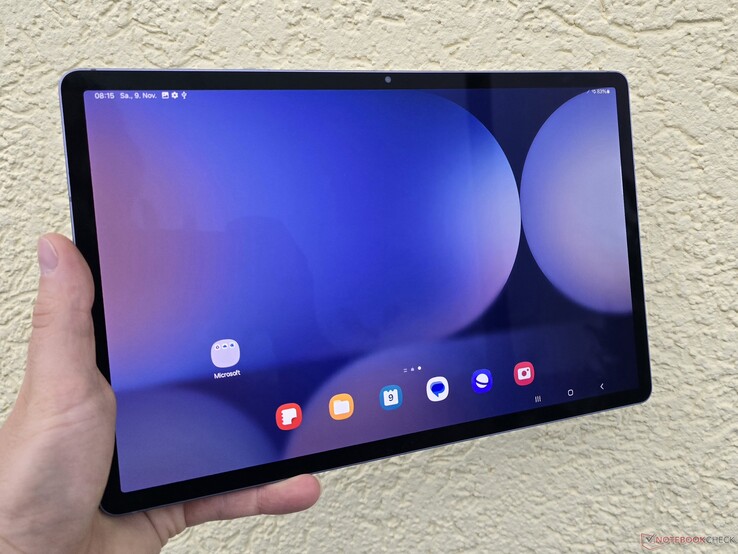





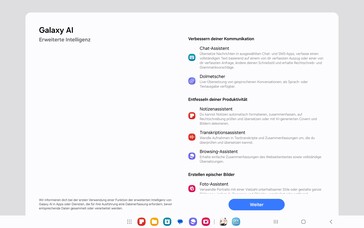
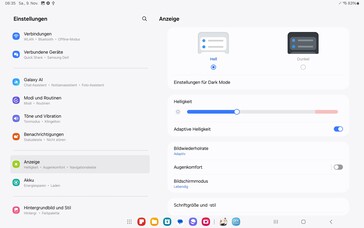


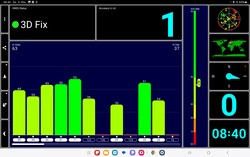


















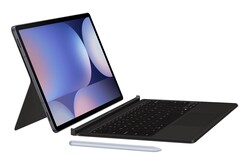


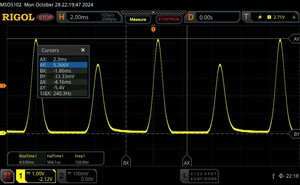







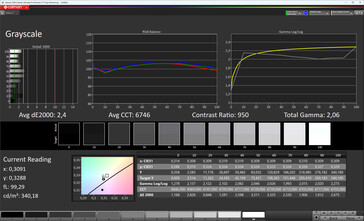
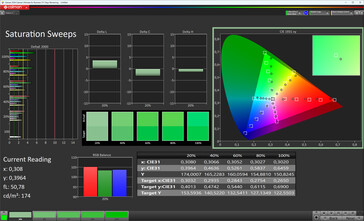
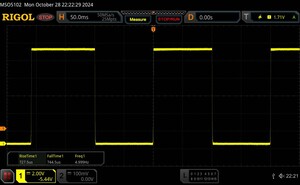
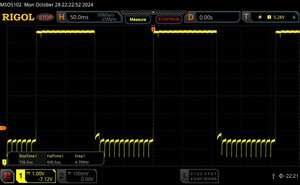

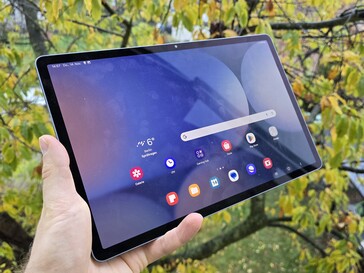



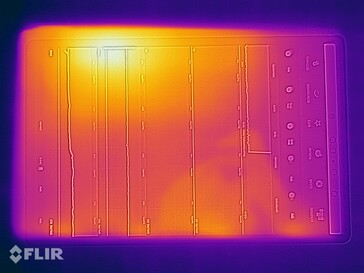
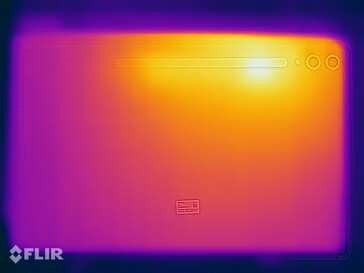
 Total Sustainability Score:
Total Sustainability Score: 


